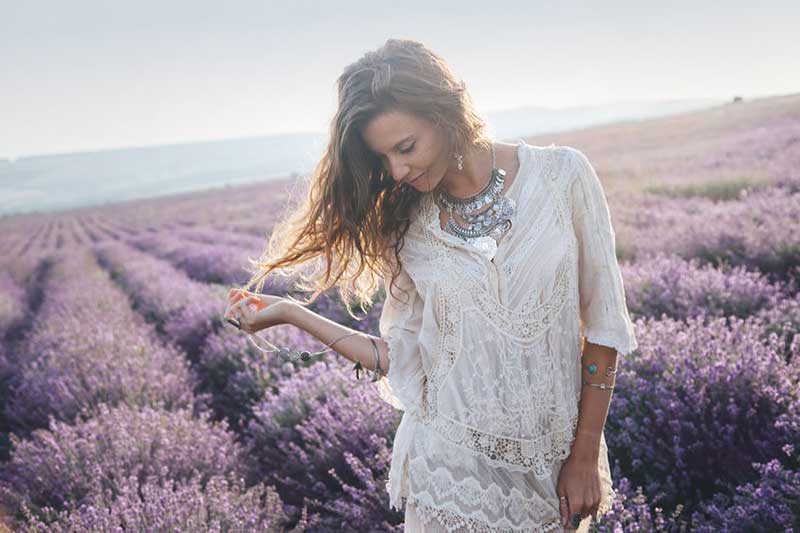
All of our senses are connected with memories, and smell is particularly connected with emotional memory. Smells can evoke powerful emotional reactions, and with that understanding comes the opportunity for smart scent branding for your spa. Hotels do it, car companies do it, even sportswear companies do it. Used well, olfactive branding, or scent branding – the use of scent as a branding tool – can be an effective way building emotional loyalty. But it’s not easy.
Dawn Goldworm, a nose, and the co-founder of olfactive branding company 12.29, has created scents for Lady Gaga, Valentino, Mercedes, Porsche, Citizen M Hotels, and more (I’m so jealous. Dream job). She says that , while scent can evoke psychological, emotional, and sometimes physical reactions, these are based on generational and cultural experience – something to be aware of when attempting to create an experience.
What does your spa smell like now? Probably some combination of lavender or tea, maybe orange blossom, rose, sandalwood and/or eucalyptus? Am I right?
There’s a reason for this. These scents are regarded as therapeutic and relaxing, and in some cases there is scientific evidence to back this up.
Yes, some ingredients, like lavender and rose, can have calming effects. But as they’re used in a variety of different ways around the world, they might not create the experience you’re after in some populations. In Central and South America, for example, lavender is used in baby products, Goldworm explains.
“So,” she says, “if you have young children, and you’re looking to have a relaxing day at the spa, and everything is scented with lavender, you’re going to be thinking about your kids the whole time. Not that you would ever not think about your children, but maybe you wanted an hour or two to yourself.”
It’s good to be aware of these things, since your guests might come from anywhere in the world.
A lot of North American (and probably British) Gen X-ers also associate lavender with the smell of “old ladies,” thanks to the bath salts and sachets our aunts and grandmothers had around their houses. This — with great respect to old ladies (I hope to join your ranks in the not-too-far-off future) — might not be what you’re going for.*
The scent in a spa, obviously, should make you feel relaxed.
“It should make you feel soft,” says Goldworm, “It should make you feel clean and fresh and beautiful. The spa is a lot about emotion, and so is scent. I would encourage people to be conscious of that when choosing scents, that people are going to a spa for a certain emotional experience, so the scent should match that.”
Standing out in a sea of lavender and tea
Cultural differences aside for a moment, how does a spa manage to create a relaxing scent but maybe stand out from all the other spas out there using lavender and tea notes?
Ed Burke of scent marketing company ScentAir says, “There is value both in the familiar and in the unique, each of which scent can evoke. The scent should make sense contextually to a guest and so using classic materials like lavender and eucalyptus can help create that familiarity and contextual sense. Then, we can also add notes that are perhaps not so familiar: a unique tea blend, or a more exotic citrus note than is commonly used. While standing out is very important, creating a welcome and inviting arrival is really the top priority for the scent service for most of our spa customers.”
Creativity is key.
Goldworm describes the scent experience at the Guerlain Spa in Paris, where the guest chooses from among Guerlain’s core fragrances, such as Shalimar and Jicky, and the experience is then scented with that fragrance throughout, after which they spray the guest before they leave.
“So you have this whole scent experience the whole time, which is a different way to use scent than what most spas do. I think it’s very romantic, and it’s a lovely individualized addition to the experience,” says Goldworm.
Another example of creativity is the Blend Bar, created by Paul Heslop at Salt of the Earth in Salt Lake City. The blend bar allows spa professionals or their clients to mix products, including scents, creating their own product, which they can then take home.
Try coming up with your own ideas to create a unique and memorable experience.
Three tips for using scent in your spa:
Think of the whole picture: Goldworm says, “I would encourage the spa to make sure that whatever scent they put in the air matches the scent of their products, to create a seamless experience.”
Maybe this means variations on a theme, rather than using the same scent all over the place.
Personalize: Personalization is everything these days. With scent, many spas offer a choice of oils for massage. Create several signature brand scents and provide a choice.
“I would also encourage spas to look at who their client is, and what culturally makes sense for whoever they are in the world.”
Understand the experience you want to create: Relaxing floral and tea notes might not work for every experience.
“A sports massage might use more menthol, citrus, and maybe even some dynamic wood notes to relax the muscles,” says Goldworm. “It really depends on the experience you’re looking to create.”
*Note please that I love lavender and am wearing it right now.
Spa Executive magazine is published by Book4Time, the world’s most innovative spa, salon, wellness, and activity management software. Learn more at Book4Time.com
(Image: Copyright: alenkasm / 123RF Stock Photo)



